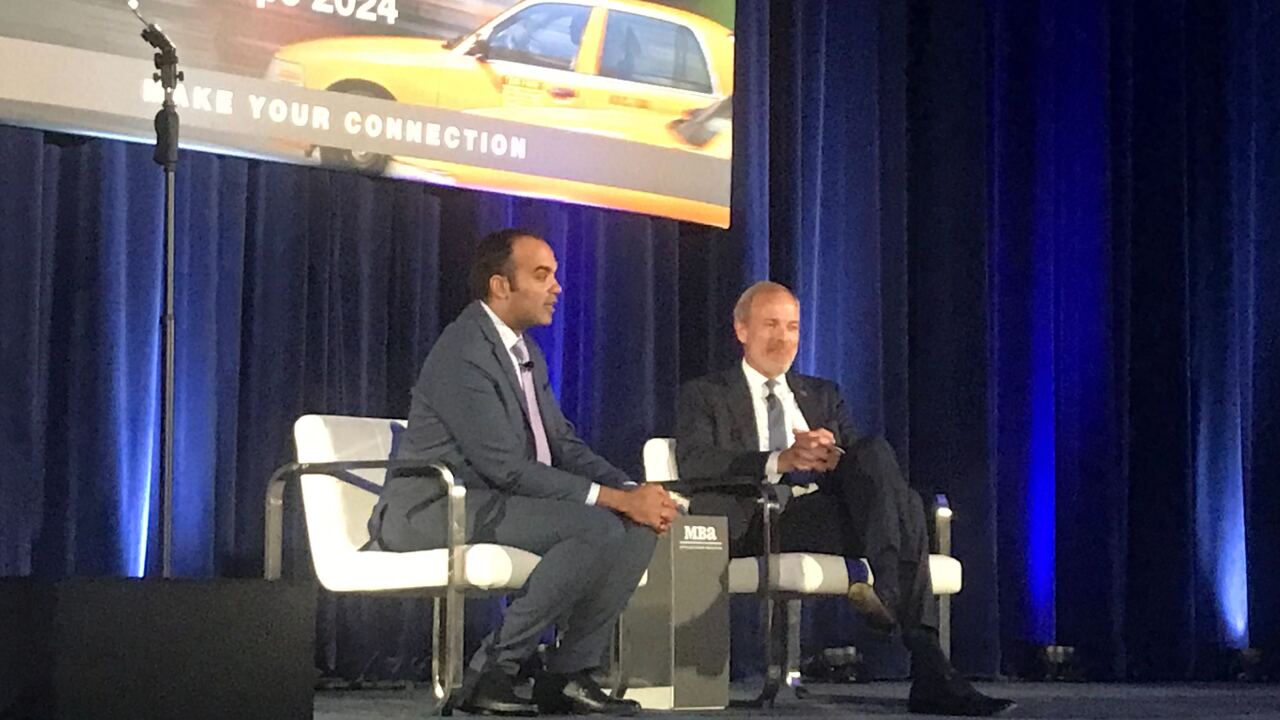
On July 21, 2011, one year after President Obama signed the Dodd-Frank Act, the
Seven weeks after the CFPB opened its doors, I joined its regulations office, where I worked until February. Back then, things were messy. The uncool, retro confines of headquarters featured paper-thin walls, creaky floors and visible roaches. A job candidate and his interviewer once became stuck in a conference room, and the maintenance team used "MacGyver" skills to rescue them because brute force would have brought down the surrounding walls. The conference rooms had random names, such as "Hockey Stick." The copiers malfunctioned more than the notorious printer in "Office Space."
In this frenetic and often bizarre environment, the mantra was that we were "building the plane as we're flying it," and eventually would reach a "steady state." The "Hockey Stick" room was an aspirational metaphor: A hockey stick on the wall represented early, rapid growth (the blade) followed by a long period of stability (the shaft). The precarious setup was juxtaposed against the energy and productivity we brought to our work. There were growing pains. But staff and management were deeply and collectively committed to institution building.
After 12-plus years, the CFPB is here to stay. It survived the first constitutional challenge, with one important change — the president can fire the CFPB's director at will. It just weathered a second, with the Supreme Court
Beneath the surface, however, all is not well.
Institution-building efforts have atrophied. Most federal agencies function as a pyramid — rotating politicos at the top set the policy agenda, and career staff at the foundation provide stability. But the CFPB has not yet developed durable institutional processes. Consequently, it operates as a reverse pyramid. Political leadership reigns over both policy and the organization, creating little continuity across administrations. This is accentuated by the departure of career staff who were institutional knowledge repositories. Consequently, the agency is more susceptible than others to political leadership's shifting preferences.
A few examples: First, CFPB leadership keeps
These are signs of an organization struggling to mature and find its way.
All this felt like whiplash on the inside. Now, as I counsel clients, it confirms how the constant changes create pain points for outsiders, too. Companies want clear rules of the road and consistency in how those rules are developed — a road that doesn't keep veering off course.
At an industry conference, Consumer Financial Protection Bureau Director Rohit Chopra said he was open to suggestions on how to increase choice and competition to benefit mortgage lenders and borrowers.
It's easy to forget the CFPB is only 12 years old. Among federal agencies, CFPB is nascent. By comparison, the Bureau of Customs and Border Protection (formerly the Customs Service) dates back 234 years, and the Federal Trade Commission is a spry 109. My daughter just turned 12. Other than the obligatory Taylor Swift obsession, she's like the CFPB: smart, growing fast, yet not fully mature. A learning curve is understandable.
At the same time, neither consumers nor industry has time to endure the CFPB's teenage identity crisis. Consumer finance presents unique policy and legal complexities, and the CFPB has just begun to grapple with the hard questions about its authorities. For example, the CFPB has not clearly interpreted its statutory authority to prohibit "abusive" practices — a fact I know well, having helped draft two different policy statements under different administrations.
Indeed, the CFPB has reinvented itself multiple times already. The agency emphasized enforcement under Cordray, supervision and innovation under Kraninger and a Big Tech focus and non-rule guidance under Chopra. These pronounced shifts may advantage one side or the other in the short term. But they are Pyrrhic victories because they reduce the agency's credibility and policy durability over time. Nobody benefits from that dynamic.
CFPB leadership regardless of party should resist the short-term incentives to shape both policy and the organization during a four-year time horizon and disregard long-term impacts. Instead, it should reinvigorate the early years' effort of institution-building even if it outlasts its tenure. Stronger internal processes would facilitate greater policy coherence and predictability about agency action. And it would allow staff to focus on their jobs rather than the distractions of a shape-shifting organization.
Inattention to institution-building leads to opportunity costs that will only grow. Finishing the job of building the plane will require CFPB leadership to look inward, invest resources and focus on issues that don't grab headlines. But the long-term payoff would be significant.
The CFPB has accomplished a great deal in 12-plus years and deserves a victory lap with the Supreme Court win. But even with the CFPB






